Air differential pressure sensors play a vital role in maintaining environmental control and safety within critical applications such as cleanrooms, laminar flow cabinets, and ventilation systems. By accurately measuring the pressure difference between two points, these sensors enable precise monitoring, control, and alarm capabilities to ensure optimal operating conditions and regulatory compliance.
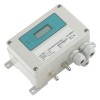 DPS Low Differential Pressure Transmitter - Ultra low differential pressure transmitter for HVAC applications with 4-20mA current loop or amplified voltage output signal in pressure ranges from 0.1 mb up to 1 bar differential.
DPS Low Differential Pressure Transmitter - Ultra low differential pressure transmitter for HVAC applications with 4-20mA current loop or amplified voltage output signal in pressure ranges from 0.1 mb up to 1 bar differential. 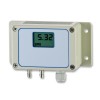 DPS200 HVAC Differential Pressure Transmitter - Differential air pressure sensor with a 10 volt or a 4-20mA output for building ventilation applications. Ranges from 0 to 6 mbar up to 0 to 1000 mbar.
DPS200 HVAC Differential Pressure Transmitter - Differential air pressure sensor with a 10 volt or a 4-20mA output for building ventilation applications. Ranges from 0 to 6 mbar up to 0 to 1000 mbar. DPS300 User Switchable Pressure Range, Volts or Current Output Low DP Sensor - The DPS 300 is a low range HVAC differential pressure sensor. The lowest possible pressure range is 0...100 pascals. 2 or 3 switchable pressure ranges, plus volts or current output are included with most standard configurations.
DPS300 User Switchable Pressure Range, Volts or Current Output Low DP Sensor - The DPS 300 is a low range HVAC differential pressure sensor. The lowest possible pressure range is 0...100 pascals. 2 or 3 switchable pressure ranges, plus volts or current output are included with most standard configurations.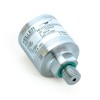 41X Low Range Digital Output Pressure Sensor - Low pressure sensor with a USB, RS232 or RS485 digital output interface for measuring low range gauge or differential pressures from 10 to 300 mbar.
41X Low Range Digital Output Pressure Sensor - Low pressure sensor with a USB, RS232 or RS485 digital output interface for measuring low range gauge or differential pressures from 10 to 300 mbar. 41X High Precision Low Range Pressure Transmitter - High precision pressure transmitter for measuring very low vented gauge reference or differential air pressures. Rangeable 4-20mA or 0-10 volt output.
41X High Precision Low Range Pressure Transmitter - High precision pressure transmitter for measuring very low vented gauge reference or differential air pressures. Rangeable 4-20mA or 0-10 volt output.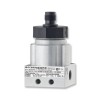 DMD341 Compact Differential Air Pressure Sensor - Small size dp sensor for measuring differential air pressure on HVAC, compress air and pneumatic control systems.
DMD341 Compact Differential Air Pressure Sensor - Small size dp sensor for measuring differential air pressure on HVAC, compress air and pneumatic control systems.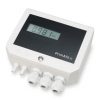 PrimAtü 10 Low Cost Low Range Differential Air Pressure Transducer - The PrimAtü 10 low cost low range differential air pressure transducer can detect and display both positive and negative differential pressure variations of very low low pressure ranges from 0.5 up to 1000 mbar/hPa, and output the pressure as a 4-20mA, 0-20mA or a 0-10Vdc analog output.
PrimAtü 10 Low Cost Low Range Differential Air Pressure Transducer - The PrimAtü 10 low cost low range differential air pressure transducer can detect and display both positive and negative differential pressure variations of very low low pressure ranges from 0.5 up to 1000 mbar/hPa, and output the pressure as a 4-20mA, 0-20mA or a 0-10Vdc analog output.
- 100 Pa bi-directional range differential air pressure transmitter
- 10Pa diff range 0-20mA output air pressure sensor for automotive component testing
- Pitot tube air flow calculation 1000 hPa differential pressure transmitter
- Low-range air pressure monitoring in raised floor plenums using a wireless SNMP gateway
- Monitoring hot and cold aisle containment in datacenters using a differential pressure transmitter
- Measuring negative pressure in hospital construction zones with a low range differential pressure transducer
- Monitoring AHU cooling coil efficiency with a DP transmitter
- Airflow and chamber pressure measurement for a portable modbus data acquisition trolley
- 20 Pa DP range 0-10V output air pressure sensor for building management use
Find out more about Air DP Sensors to determine which product options and capabilities will best meet your application requirements.
Air differential pressure sensors are specifically designed to measure the difference in air pressure between two points within a system. This pressure difference, often referred to as ΔP (delta P), can provide valuable insights into the performance of air filters, ventilation systems, and other airflow-dependent processes.
Applications
- Filter Monitoring: One of the primary uses of air differential pressure sensors is in monitoring the efficiency of air filters. As a filter becomes clogged with particulate matter, the pressure drop across the filter increases. By continuously monitoring this pressure difference, the sensor can provide an indication of when the filter needs to be replaced, ensuring optimal air quality and system performance. This is crucial in applications such as HVAC systems in commercial buildings to maintain air quality and reduce energy consumption, industrial dust collection systems to ensure efficient operation and prevent particulate emissions, and medical facilities to protect patients and staff from airborne pathogens.
- Ventilation Control: In HVAC systems and cleanrooms, air differential pressure sensors play a crucial role in maintaining proper ventilation and airflow. By measuring the pressure difference between different zones or rooms, these sensors can be used to control dampers, fans, and other ventilation components, ensuring a balanced and efficient airflow. This is essential for maintaining comfortable and healthy indoor environments, preventing the spread of airborne contaminants, and optimizing energy efficiency in HVAC systems.
- Laminar Air Flow Cabinets: These specialized cabinets provide a sterile environment for laboratory work and other sensitive applications. Air differential pressure sensors are used to monitor the airflow within the cabinet, ensuring that it remains unidirectional and free from contaminants. This is critical for protecting sensitive experiments and materials from contamination, and ensuring the safety of laboratory personnel working with hazardous materials.
- Clean Room Partition Walls: Maintaining a pressure cascade between different cleanroom zones is critical for preventing contamination. Air differential pressure sensors are used to monitor the pressure difference across partition walls, ensuring that air flows from cleaner to less clean areas. This is vital in industries such as pharmaceutical manufacturing to prevent contamination of sterile products, and microelectronics fabrication to protect sensitive components from particulate matter.
- Flow Measurement: Air differential pressure sensors can be used to infer flow rates in ducts and pipes. By measuring the pressure drop across a known restriction, such as an orifice plate, the flow rate can be calculated. This is useful in applications such as monitoring compressed air consumption in industrial plants, and measuring airflow in ventilation systems.
- Biohazard Containment: In facilities handling biohazardous materials, maintaining proper airflow and pressure differentials is crucial for preventing the escape of dangerous pathogens. Air differential pressure sensors are used to monitor and control airflow in biological safety cabinets to ensure containment of infectious agents, isolation rooms to prevent the spread of airborne diseases, and pharmaceutical production facilities to protect workers and the environment from exposure to biohazards.
